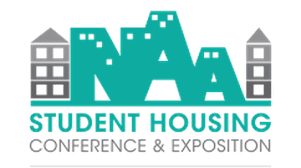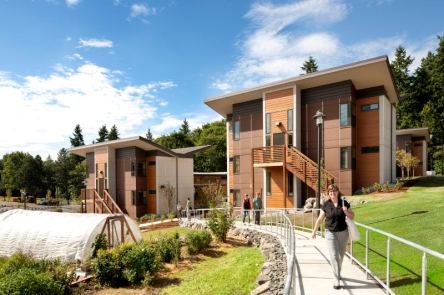Many student housing providers offer conflict mitigation as a way to keep the peace between roommates. If you don’t, it’s a good idea to start. Roommate conflicts increase turnover and impact your bottom line. Below are three tips to share with your student residents. They promote clear communication between roommates. More importantly, they cut turnover costs for you and preserve your reputation with prospects. Don’t overtax your friendship. Their message: Your friend may be the most compassionate and forgiving person that you know—don’t take advantage of that. Don’t splurge your rent money on SXSW tickets and then pay late on rent because “she’ll understand.” Certainly don’t eat the last of her Greek yogurt. Strained relationships add stress to living arrangements and can affect your academic performance. Honor your friendship like it matters. Your benefit: Bills are paid on time which is a huge plus in student housing. With better relationships between roommates, there are fewer squabbles that require third party negotiation. Your staff is free to focus on loyalty initiatives and new leases. Learn to talk about money together Their message: You will have to negotiate how much you’re willing to spend each month on cable, internet, and optional fees like trash removal (rather than doing it yourself). When you’re comfortable talking to each other about money upfront, there are fewer chances for spending beyond your roommate’s ability to keep up. You can room together happier, longer. Your benefit: This is especially important when rent does not include utilities and other fees in a single bundle. If one resident is more wasteful than the others due to poor roommate pairing, turnover is inevitable. By having money conversations upfront, roommates can pair with other like-minded (or like-budgeted) individuals and reduce the need to switch roommates....
Student Housing
Successes Boost Confidence
Just as industry experts thought the interest in student housing may begin to plateau, the prospects for growth are shining brighter. Investors made $1.1 billion in student housing property transactions in the first quarter of 2017, reports CRBE. This figure excludes portfolio deals, which held their own: Q1 ended with the sale of a $1.6 billion portfolio, which is a great start to the year. Local and foreign investors are showing confidence in the student housing sector. Student housing is historically more stable throughout economic fluctuations. There are fewer enrollment surges during times of prosperity and fewer dips in enrollment during challenging times, reports TH Real Estate. Tom Park, Senior Director, Strategy & Research at TH Real Estate, explains: “Rental growth in the sector has proven to be less volatile than that of conventional apartments – partially as a result of the sector being less economically sensitive. Results for some of the largest players in the market show rental growth volatility, as indicated by the standard deviation, was lower than conventional apartments and capital expenditures are in line with those of conventional apartment.” College enrollments have continued to rise since 2008. Most notably, 2014 ushered in $3.5 billion in sales, topped in 2015 with $6 billion and $10 billion in 2016. The consistent growth contributes to the perception that student housing is a recession-resistance sector. Enrollment in and applications for post-graduate programs are also rising. TH Real Estate estimates that about 3 million students enrolled in post-graduated programs in fall 2016. That figure has consistently risen since 2010 when enrollments maxed at about 2.2 million. Post-graduate studies will extend the demand for student housing Though enrollments continue to grow, state budgets for education are shrinking. Public colleges and universities seek out institutional investors and developers...
NAA Student Housing
2017 Expo Recap
At the 10th NAA Student Housing Conference & Exposition, held in Chicago on Feb. 14-15, featured more than 100 exhibitors, two keynote speakers and one expert panel. More than 860 industry attendees — including marketers, property and portfolio managers, leasing specialists, developers and suppliers — converged to take their student housing game to the next level. While the industry pros in attendance were likely familiar with successful student housing management, but there was still a lot to learn in 16 breakout sessions about the latest trends and technology innovations. Here are some of the highlights: In the entertaining general session, keynote speaker Johnny Cupcakes, dubbed “top innovator in retail” by The Boston Globe, talked with great energy about his off-beat approach to branding that creates fanatic and loyal customers. His colorful line of t-shirts and other apparel frequently feature collaborations with characters and brands that his audience feel great nostalgia for, such as Hello Kitty and Minecraft. Limited edition items sold from bakery-themed retail stores, pop-up shops, and social media scavenger hunts generate excitement, FOMO (fear of missing out) and lines out the door. Leveraging innovation to captivate a tech-savvy consumer group was the focus of “Designing the Student Housing Property of the Future, Today.” Exploring the “Uberfication” of student housing, it is clear that connected buildings with speedy Internet and plenty of bandwidth for gaming and more is expected by Gen Z. Technology rich communal spaces including charging stations and “smart board” interactive touch screens are highly coveted amenities. Speaker Faith Hawkins, an architect, shared that students are now using an average of 10 wifi-supported devices, connected simultaneously. More desirable amenities for student renters include keyless building entry via smartphones, and optimized package and grocery delivery services for a generation that does most...
Dorm Rooms Get Green
Sustainable Collegiate Living
As demand for modern, energy-efficient and environmentally friendly campus housing continues to grow, colleges and universities are embracing a new era of sustainable student residences. Recent estimates by the DOE, EPA Energy Star, and ACEE reveal student housing represents a huge opportunity for energy efficiency in multifamily housing. With the chance to reduce energy use by up to 30% at new or existing properties, any energy efficiency or sustainability effort is sure to quickly meet (and probably surpass) initial ROI estimates. Currently, multifamily properties accumulate more than $30billion in energy costs annually – sometimes paid by tenants, but other times falling into the lap of owners and property managers. With an estimated $3.4 billion in energy savings possible, it makes sense for the student housing industry to focus on sustainability. Additionally, sustainable student housing presents an enormous marketing opportunity for property owners and managers: a recent poll revealed 60% of college students believe protecting the environment should be prioritized, and a whopping 76% support policies encouraging energy efficiency (rather than seeking new energy sources) to meet energy demands. Stylish and Sustainable in Seattle Initially conceived as a traditional, multi-story dorm designed to house 130 students, Bastyr University’s 2010 student housing project eventually transformed into a sustainable, LEED certified student village. Located just east of downtown Seattle, Bastyr University prides itself on its position at “the forefront of developing the model for 21st-century medicine.” With a multidisciplinary curriculum focused natural medicine, Bastyr University readily assumed the mantel of sustainable student housing pioneer. Bastyr’s Student Village is comprised of an 11-cottage complex spread out over 12 acres on Bastyr’s 52-acre campus. Each three-story cottage can house up to 12 students who have access to common areas, a central courtyard and a variety of sustainable features...
Student Services
6 Smart Housing Tips
We are seeing dozens of headlines each month that herald the arrival of another luxury student housing community. These ultra-posh accommodations can cast a rather unglamorous shadow on nearby aging properties with fewer resources. If you find yourself in the shadow of the shiny new community down the street, don’t fret. Instead, use that energy to implement creative solutions for attracting student renters. While you might not have the newest property on the block, there is still a pool of quality renters who are in need of your services. Identifying, developing, and marketing those services will be your keys to success. Value Many students are priced out of newly constructed housing, which will send them your way as an alternative. It’s up to you to shine brighter than other listings in their price bracket. Instead of free rent and waiving fees, aim for investments that provide long-term convenience and value. Bundling trash services and utilities with the rent creates a quick, easy payment setup that young adults appreciate. Including appliances with the unit (especially a washer and dryer) is a quick way to add value and convenience for cash-strapped youth. Location Proximity to campus is priceless for students, allowing them to save money on transportation costs and save time. Be sure that your digital presence, print materials, and social media “about” sections include your proximity to local campuses. In high traffic places in the building, post transit schedules and a map of local stops. Responsive Staff Young renters expect online resident services: online leasing, online bill pay, and online maintenance requests are just a few of the conveniences that you can offer to tech-savvy youth. Going digital will allow your team to process applications quickly and efficiently. Conveniently, online services will also free up your...





